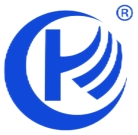Working principle of activated carbon production by sharp
Activation Furnace 3 (one of
Activated Carbon Production Equipment)
1.5.1. Main part of furnace body
(1) preheating section: the biggest feature of this section is that it does not directly contact with materials. There are two main purposes, one is drying and auxiliary heating carbonized materials through heat exchange between refractory bricks and materials, and the other is to increase combustion temperature of combustion chamber at the top of regenerator.
The combustion chamber is not connected with the air pipe, so the air will not be blown in and the temperature can not be adjusted. The temperature changes with the change of the temperature at the top of the regenerator, so there is no need to adjust and control the temperature. The specific change process is as follows:
In the blast heating section, the high-temperature flue gas from the lower part of the furnace body exchanges heat with the carbonized material through the refractory brick, and then enters into the regenerator for combustion, and the temperature of the ignition chamber decreases. When the heating material is heated by the flue gas, the heat carried by the heating material at the bottom of the furnace enters into the reaction chamber after being heated by the flue gas.
There is much steam in the combustion chamber.
(2) supplementary carbonization section: in theory, there is still residual volatile matter in the carbonized material entering the activation furnace, but it is generally required to be about 3% and not more than 8% in theory. If the volatile matter is too low, it is difficult to raise the temperature of furnace body, and the requirements for carbonization workshop are strict. However, if the volatile matter is too high, it means that the adhesion is also high, and it is easy to melt and coking at high temperature to block the material channel. The main purpose of the supplementary carbonization section is to further improve the material temperature, and the second is to continue to retort carbonized materials to increase carbon content and remove volatile matter as much as possible.
The main process is the same as the coking process. A small amount of air and residual volatile matter react with the outer carbon of carbonized material to carbonize the inner carbonized material. Water gas reacts to cool down and replenish combustible gas to maintain high temperature.
In principle, if the volatile matter of the material is high, the temperature at this point should be increased appropriately. If the carbonization degree of the material is high, the temperature at this point should be reduced appropriately. Some high distillation temperatures may also lead to a significant increase in the proportion of generated powder. In the steam cooling section, too much pulverized coal may be pressed into the air pipe and agglomerate when encountering water, which will reduce the inner diameter of the pipe inlet and even block the pipe, thus reducing the heating efficiency, increasing the working furnace pressure passively and even leading to failure.
The main product at this point is carbon monoxide, which is the product of incomplete combustion, and the dust in the tail gas mainly comes from here.
(3) activation section: the main reaction position of activation furnace directly determines the product quality and output. In 560 slap activation furnace, 5-12 points are activation section. In theory, the temperature should be 920-960 ℃, and the temperature should be the highest outside the regenerative chamber. The main purpose is to artificially "create pores", improve the porosity of carbonated materials, and then greatly increase its specific surface area to obtain activated carbon products with high adsorption capacity.
There are two reaction stages
① Heating and retorting stage. The air is blown in and reacts violently with combustible gases such as carbon monoxide and hydrogen as well as the outermost carbon of carbonization material, which releases a lot of heat to raise and maintain the furnace body temperature.
② Steam activation section. Under the condition of high temperature above 900 ℃ and local high pressure, the superheated steam will react with the carbonized material to "break down" the carbonized material, leaving numerous "channels" in the coke particles that can not be seen by the naked eye, so as to obtain qualified activated carbon products with large porosity and high specific surface area and extremely high adsorption capacity. At the same time, the activation reaction in this stage is also responsible for the "volatilization" task, generating enough combustible gas such as water gas, which is provided to the blast section for combustion and heating.
The two main working stages lasted for 30 minutes each time, and the cycle was carried out alternately, so as to ensure the high temperature inside the furnace body and the full activation reaction, so as to produce qualified activated carbon products with quality and quantity.
(4) cooling section: the activated carbon after high temperature reaction is cooled to below 900 ℃ at this stage, and the retorting and activation reaction are still carried out.
The hot activated carbon with temperature above 800 ℃ is cooled to about 200 ℃ by heat exchange between firebrick and air above the air pressure pulling plate above the hopper, and then the product enters the hopper to be cooled to less than 100 ℃. Through the stainless steel chain plate conveyor, the product enters the drum cooler to cool down to room temperature, and is transported to the silo by bucket elevator.
This is mainly used as the end of the whole activation reaction to ensure that the activated carbon activation reaction is sufficient and the quality meets the requirements. Because of the low temperature, the main products are carbon dioxide and water vapor. During the steam cooling stage, the combustible gas such as water gas will also enter the other half of the furnace through the fire passage for combustion and heating.



